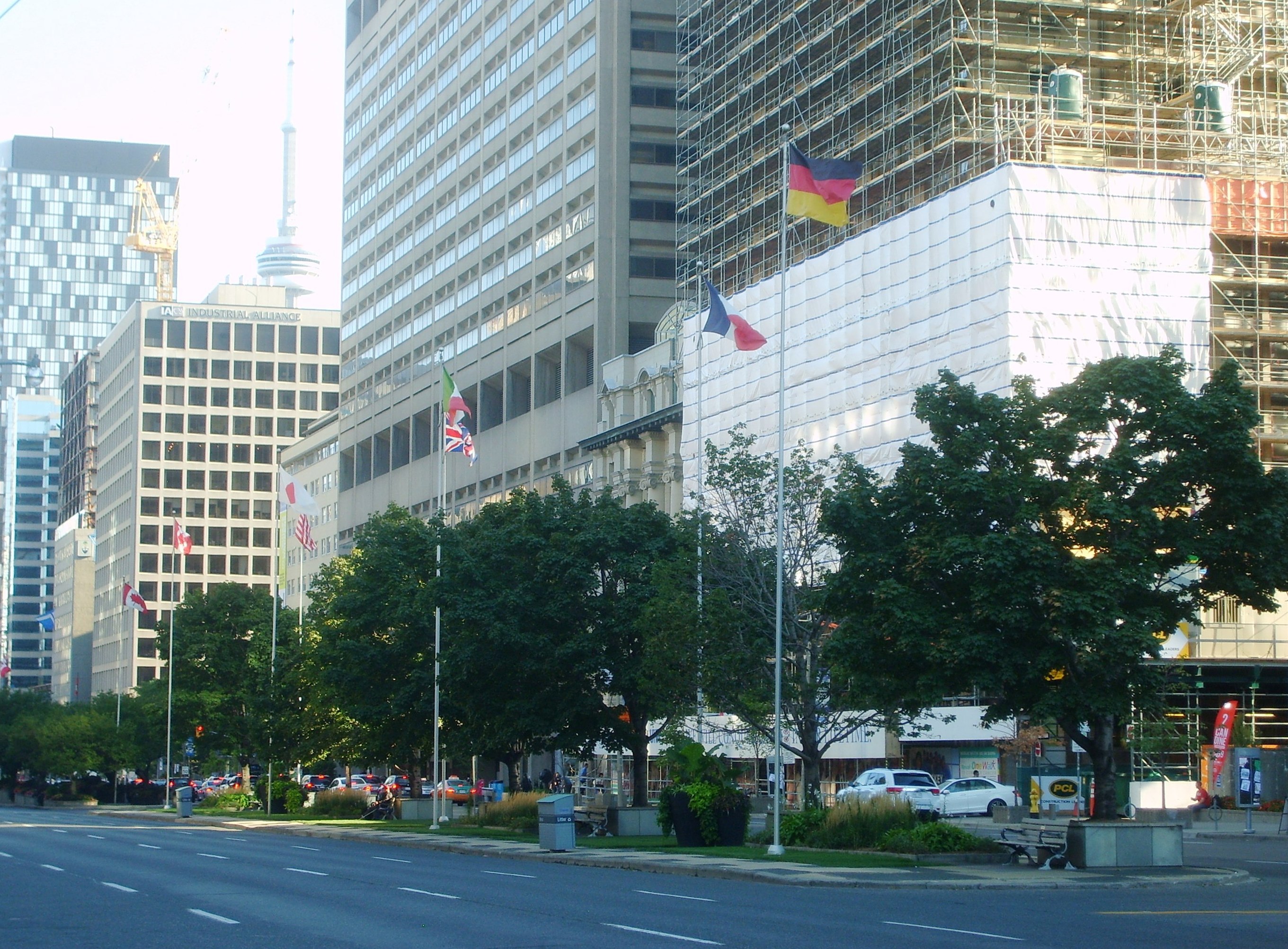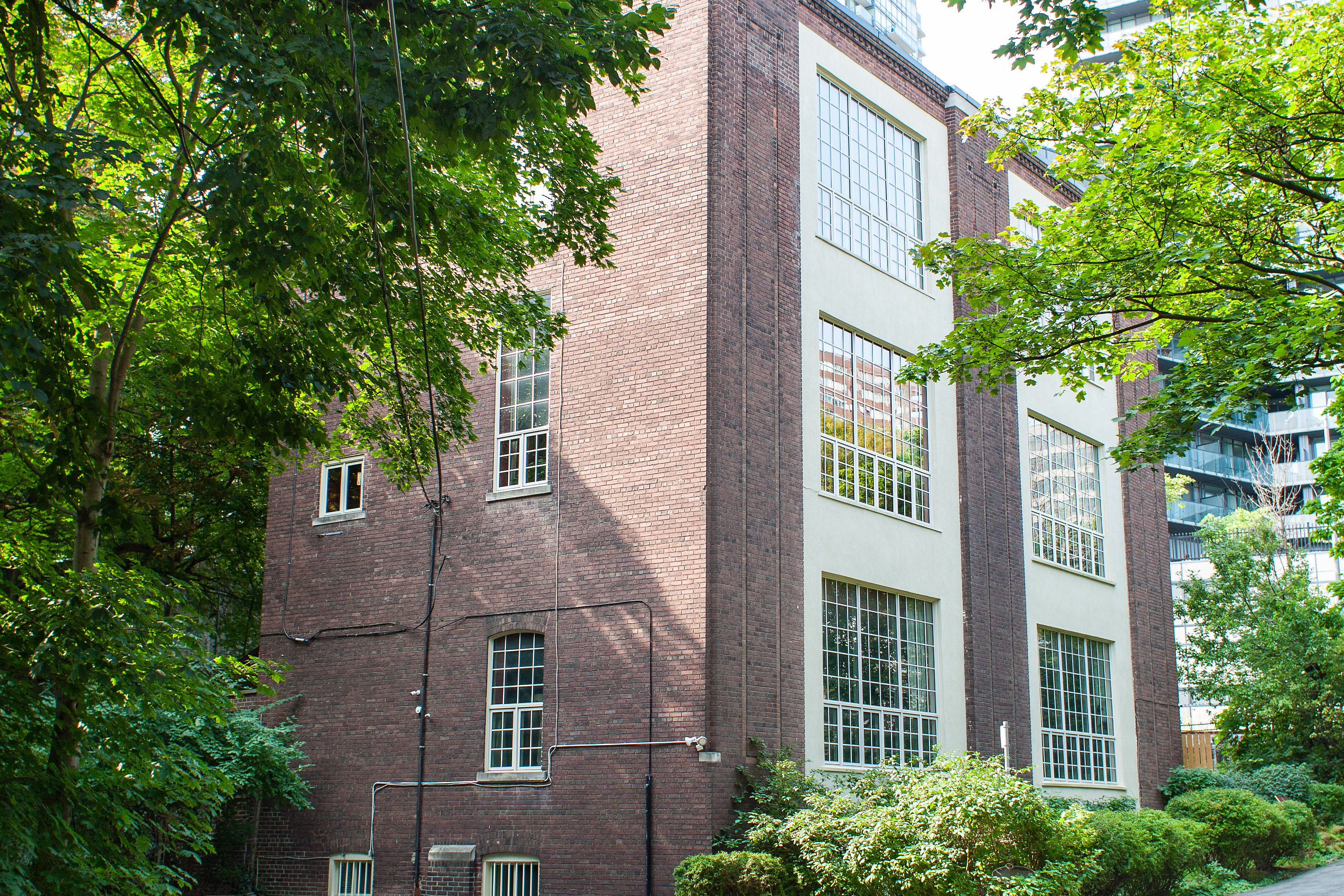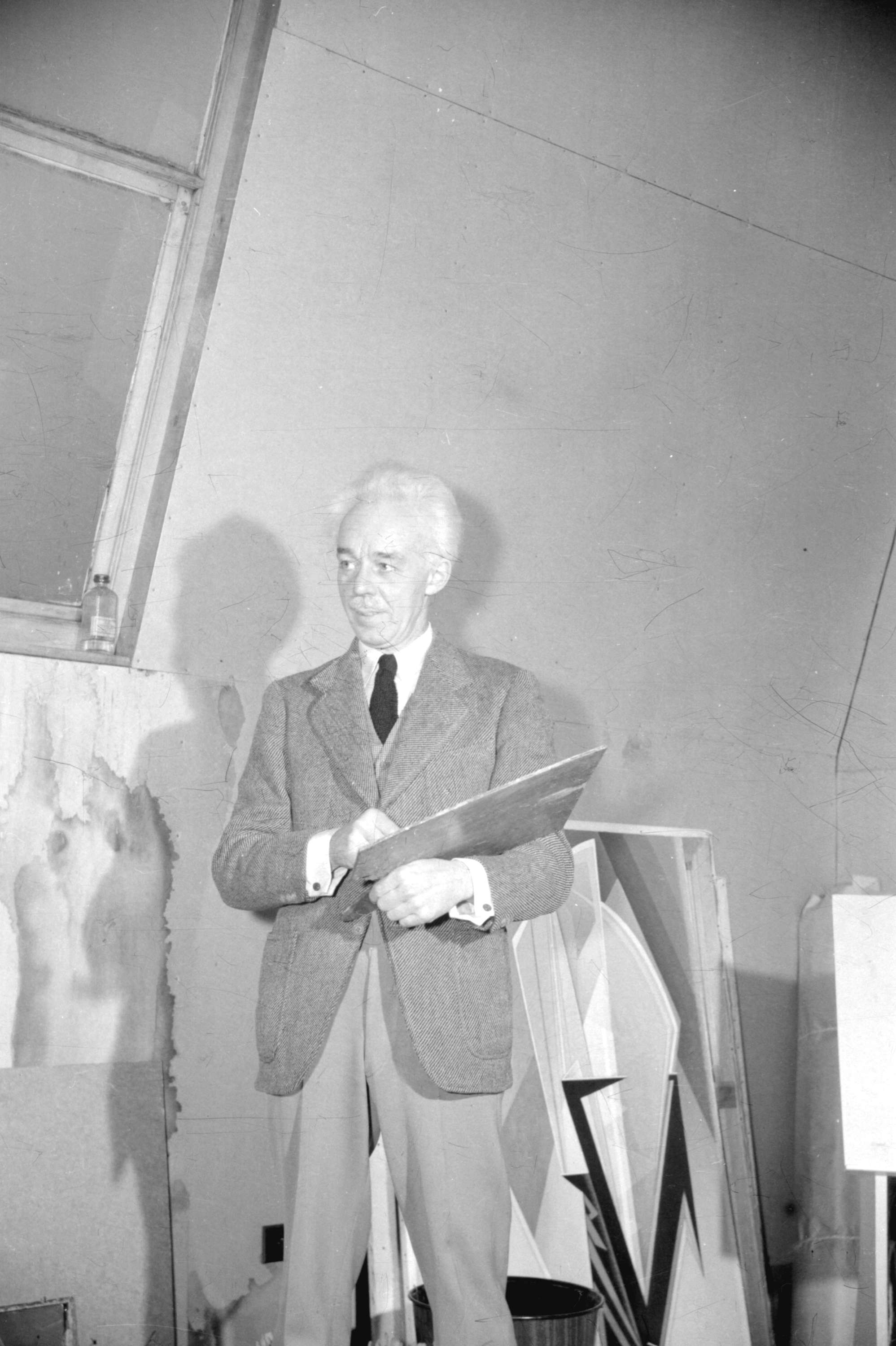|
Arthur Lismer
Arthur Lismer, LL. D. (27 June 1885 – 23 March 1969) was an English-Canadian painter, member of the Group of Seven and educator. He is known primarily as a landscape painter and for his paintings of ships in dazzle camouflage. Early life Lismer was born in Sheffield, Yorkshire, England, the son of Harriet and Edward Lismer, a draper's buyer. At age thirteen, he apprenticed at a photo-engraving company. He was awarded a scholarship, and used this time to take evening classes at the Sheffield School of Art from 1898 until 1905. In 1905, he moved to Antwerp, Belgium, where he studied art at the Academie Royale. Lismer immigrated to Canada in 1911, settled in Toronto, Ontario, and took a job with Grip Ltd. Lismer's brother, Ted, remained in Sheffield and became a notable trade unionist and communist activist. President of NSCAD University From 1916 to 1919 Lismer served as the President of the Victoria College of Art in Nova Scotia (now NSCAD University). Official war ar ... [...More Info...] [...Related Items...] OR: [Wikipedia] [Google] [Baidu] |
Sheffield
Sheffield is a city status in the United Kingdom, city in South Yorkshire, England, whose name derives from the River Sheaf which runs through it. The city serves as the administrative centre of the City of Sheffield. It is Historic counties of England, historically part of the West Riding of Yorkshire and some of its southern suburbs were transferred from Derbyshire to the city council. It is the largest settlement in South Yorkshire. The city is in the eastern foothills of the Pennines and the valleys of the River Don, Yorkshire, River Don with its four tributaries: the River Loxley, Loxley, the Porter Brook, the River Rivelin, Rivelin and the River Sheaf, Sheaf. Sixty-one per cent of Sheffield's entire area is green space and a third of the city lies within the Peak District national park. There are more than 250 parks, woodlands and gardens in the city, which is estimated to contain around 4.5 million trees. The city is south of Leeds, east of Manchester, and north ... [...More Info...] [...Related Items...] OR: [Wikipedia] [Google] [Baidu] |
Arthur Lismer - Olympic With Returned Soldiers
Arthur is a common male given name of Brythonic origin. Its popularity derives from it being the name of the legendary hero King Arthur. The etymology is disputed. It may derive from the Celtic ''Artos'' meaning “Bear”. Another theory, more widely believed, is that the name is derived from the Roman clan '' Artorius'' who lived in Roman Britain for centuries. A common spelling variant used in many Slavic, Romance, and Germanic languages is Artur. In Spanish and Italian it is Arturo. Etymology The earliest datable attestation of the name Arthur is in the early 9th century Welsh-Latin text ''Historia Brittonum'', where it refers to a circa 5th to 6th-century Briton general who fought against the invading Saxons, and who later gave rise to the famous King Arthur of medieval legend and literature. A possible earlier mention of the same man is to be found in the epic Welsh poem ''Y Gododdin'' by Aneirin, which some scholars assign to the late 6th century, though this is still a ... [...More Info...] [...Related Items...] OR: [Wikipedia] [Google] [Baidu] |
Art Gallery Of Toronto
The Art Gallery of Ontario (AGO; french: Musée des beaux-arts de l'Ontario) is an art museum in Toronto, Ontario, Canada. The museum is located in the Grange Park neighbourhood of downtown Toronto, on Dundas Street West between McCaul and Beverley streets just east of Chinatown and just west of Little Japan. The museum's building complex takes up of physical space, making it one of the largest art museums in North America and the second-largest art museum in Toronto after the Royal Ontario Museum. In addition to exhibition spaces, the museum also houses an artist-in-residence office and studio, dining facilities, event spaces, gift shop, library and archives, theatre and lecture hall, research centre, and a workshop. It was established in 1900 as the Art Museum of Toronto, and formally incorporated in 1903, it was renamed the Art Gallery of Toronto in 1919, before it adopted its present name, the Art Gallery of Ontario, in 1966. The museum acquired the Grange in 1911 and late ... [...More Info...] [...Related Items...] OR: [Wikipedia] [Google] [Baidu] |
Centennial Of The City Of Toronto
The Centennial of the City of Toronto was celebrated in 1934, commemorating the incorporation of York into the City of Toronto. The celebrations included numerous events, exhibitions, and commemorations. Of the most modern relevance is the "Toronto's Hundred Years" Publication Committee, which published '' Toronto's 100 Years'', from which much historical perspective may be found. Organization Along with a General Centennial Committee, Toronto had at least sixteen Special Committees. They were the Music and Pageantry, Permanent Memorial, Flying, The "Toronto's Hundred Years" Publication, Travel Promotion, Veteran Reunion, Pictures, Religious Services, Stamp Exhibition, Sports, Street Decorations, Flower Show, Song Judging, Public Address, National Groups, and the Drills Corps Display Committee (which included a Mailing List Committee). General Centennial Committee * Honorary Chairman: Brigadier-General C. H. Mitchell, C.B., C.M.G., D.S.O. * Chairman: J. A. Northey * Director: L ... [...More Info...] [...Related Items...] OR: [Wikipedia] [Google] [Baidu] |
En Plein Air
''En plein air'' (; French for 'outdoors'), or ''plein air'' painting, is the act of painting outdoors. This method contrasts with studio painting or academic rules that might create a predetermined look. The theory of 'En plein air' painting is credited to Pierre-Henri de Valenciennes (1750–1819), first expounded in a treatise entitled ''Reflections and Advice to a Student on Painting, Particularly on Landscape'' (1800), where he developed the concept of landscape portraiture by which the artist paints directly onto canvas ''in situ'' within the landscape. It enabled the artist to better capture the changing details of weather and light. The invention of portable canvases and easels allowed the practice to develop, particularly in France, and in the early 1830s the Barbizon school of painting in natural light was highly influential. Amongst the most prominent features of this school were its tonal qualities, colour, loose brushwork, and softness of form. These were varian ... [...More Info...] [...Related Items...] OR: [Wikipedia] [Google] [Baidu] |
Group Of Seven
The Group of Seven (G7) is an intergovernmental political forum consisting of Canada, France, Germany, Italy, Japan, the United Kingdom and the United States; additionally, the European Union (EU) is a "non-enumerated member". It is officially organized around shared values of pluralism and representative government, with members making up world's largest IMF advanced economies and liberal democracies. As of 2020, G7 members account for over half of global net wealth (at over $200 trillion), 32 to 46 percent of global gross domestic product,Depending on whether nominal values or purchasing power parity is used. and 10 percent of the world's population (770 million people). Members are great powers in global affairs and maintain mutually close political, economic, diplomatic, and military relations. Originating from an ''ad hoc'' gathering of finance ministers in 1973, the G7 has since become a formal, high-profile venue for discussing and coordinating solutions to ... [...More Info...] [...Related Items...] OR: [Wikipedia] [Google] [Baidu] |
Post-impressionist
Post-Impressionism (also spelled Postimpressionism) was a predominantly French art movement that developed roughly between 1886 and 1905, from the last Impressionist exhibition to the birth of Fauvism. Post-Impressionism emerged as a reaction against Impressionists' concern for the naturalistic depiction of light and colour. Its broad emphasis on abstract qualities or symbolic content means Post-Impressionism encompasses Les Nabis, Neo-Impressionism, Symbolism, Cloisonnism, the Pont-Aven School, and Synthetism, along with some later Impressionists' work. The movement's principal artists were Paul Cézanne (known as the father of Post-Impressionism), Paul Gauguin, Vincent van Gogh and Georges Seurat. The term Post-Impressionism was first used by art critic Roger Fry in 1906.Peter Morrin, Judith Zilczer, William C. Agee, ''The Advent of Modernism. Post-Impressionism and North American Art, 1900-1918'', High Museum of Art, 1986 Critic Frank Rutter in a review of the Salon d'Automne ... [...More Info...] [...Related Items...] OR: [Wikipedia] [Google] [Baidu] |
Barbizon School
The Barbizon school of painters were part of an art movement towards Realism in art, which arose in the context of the dominant Romantic Movement of the time. The Barbizon school was active roughly from 1830 through 1870. It takes its name from the village of Barbizon, France, on the edge of the Forest of Fontainebleau, where many of the artists gathered. Most of their works were landscape painting, but several of them also painted landscapes with farmworkers, and genre scenes of village life. Some of the most prominent features of this school are its tonal qualities, color, loose brushwork, and softness of form. The leaders of the Barbizon school were: Théodore Rousseau, Charles-François Daubigny, Jules Dupré, Constant Troyon, Charles Jacque, and Narcisse Virgilio Díaz. Jean-François Millet lived in Barbizon from 1849, but his interest in figures with a landscape backdrop sets him rather apart from the others. Jean-Baptiste-Camille Corot was the earliest on the scen ... [...More Info...] [...Related Items...] OR: [Wikipedia] [Google] [Baidu] |
Franklin Carmichael
Franklin Carmichael (May 4, 1890 – October 24, 1945) was a Canadian artist and member of the Group of Seven. Though he was primarily famous for his use of watercolours, he also used oil paints, charcoal and other media to capture the Ontario landscapes. Besides his work as a painter, he worked as a designer and illustrator, creating promotional brochures, advertisements in newspapers and magazines, and designing books. Near the end of his life, Carmichael taught in the Graphic Design and Commercial Art Department at the Ontario College of Art (today the Ontario College of Art & Design University). The youngest original member of the Group of Seven, Carmichael often found himself socially on the outside of the group. Despite this, the art he produced was of equal measure in terms of style and approach to the other members' contributions, vividly expressing his spiritual views through his art. The next youngest member was A. J. Casson with whom he was friendly. Biography Early ... [...More Info...] [...Related Items...] OR: [Wikipedia] [Google] [Baidu] |
Lawren Harris
Lawren Stewart Harris LL. D. (October 23, 1885 – January 29, 1970) was a Canadian painter, best known as a leading member of the Group of Seven. He played a key role as a catalyst in Canadian art and as a visionary in Canadian landscape art. Early years Lawren Stewart Harris was born on October 23, 1885 in Brantford, Ontario. He was the son of Thomas Morgan Harris and Annabelle Stewart. His father was secretary to the firm of A. Harris, Sons & Company Ltd., merchants of farm machinery, which merged with the Massey firm in 1891, forming the Massey-Harris Company, later known as Massey Ferguson. Lawren Harris's share of the fortune that resulted made him free from financial cares the rest of his life. Although born to wealth, he was an individual who made his own path in his own individual way. In 1894, his father died and the family moved to Toronto. In 1899, he began to board at St. Andrew's College, which was located in Rosedale in Toronto at the time, then in 1903 attended ... [...More Info...] [...Related Items...] OR: [Wikipedia] [Google] [Baidu] |
Canadian Group Of Painters
The Canadian Group of Painters (CGP) was a collective of 28 painters from across Canada who came together as a group in 1933. Formation The Canadian Group of Painters succeeded the disbanded Group of Seven, whose paintings of the Canadian wilderness had been a strong influence on Canadian art. In the early 1930s, the Group of Seven's prominence had caused controversy as many believed that the National Gallery of Canada exhibited favouritism for their work and they were the only Canadian artists to receive global recognition. Concern over the Gallery's potential bias and exclusion of modern artists led to the formation of the Canadian Group of Painters in February 1933. The group was made up of 28 different English-speaking painters from across Canada with Lawren Harris as their inaugural president. Several of the other Group of Seven painters were also included in the new group including A. J. Casson, Arthur Lismer, A. Y. Jackson, F.H. Varley and Franklin Carmichael. Although ... [...More Info...] [...Related Items...] OR: [Wikipedia] [Google] [Baidu] |









